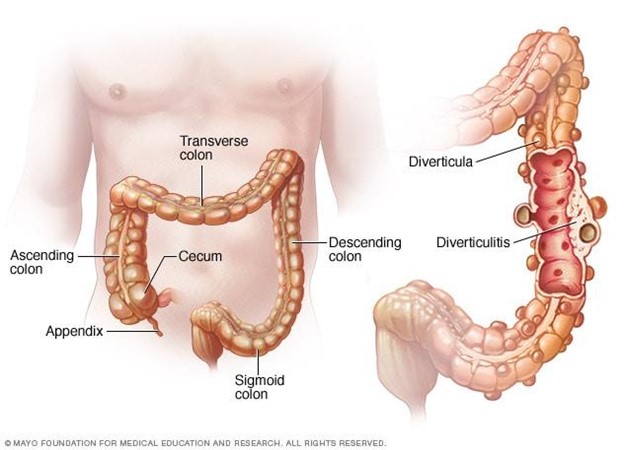A nurse is caring for a client diagnosed with an inner ear infection. Which of the following manifestations will the nurse expect the client to report?
Inability to recognize any words
Loss of balance
Twitching of the cheek
Lack of air sound
The Correct Answer is B
Choice A Reason: This is incorrect because inability to recognize any words may indicate a problem with the auditory cortex, which is the part of the brain that processes sound, not the inner ear. The inner ear consists of the cochlea, which converts sound waves into nerve impulses, and the vestibular system, which helps with balance and orientation.
Choice B Reason: This is correct because loss of balance is a common symptom of an inner ear infection. An inner ear infection can cause inflammation and fluid buildup in the vestibular system, which can disrupt the sense of equilibrium and cause vertigo, dizziness, or nausea.
Choice C Reason: This is incorrect because twitching of the cheek may indicate a problem with the facial nerve, which controls the muscles of facial expression, not the inner ear. The facial nerve runs close to the inner ear, but it is not part of it.
Choice D Reason: This is incorrect because lack of air sound may indicate a problem with the outer or middle ear, which transmit sound waves to the inner ear, not the inner ear itself. The outer ear consists of the pinna and the ear canal, and the middle ear consists of the eardrum and the ossicles.
Nursing Test Bank
Naxlex Comprehensive Predictor Exams
Related Questions
Correct Answer is ["C","E","F"]
Explanation
Choice A reason: This is incorrect because the nurse should not include this in the postoperative education to the client. The client should not drive home after glaucoma surgery, as they will have reduced vision and increased sensitivity to light in the operated eye. The nurse should advise the client to arrange for someone else to drive them home.
Choice B reason: This is incorrect because the nurse should not include this in the postoperative education to the client. The client should not lie on the right side when going to bed, as this can put pressure on the operated eye and increase the risk of bleeding or infection. The nurse should advise the client to sleep on their back or on their left side.
Choice C reason: This is correct because the nurse should include this in the postoperative education to
the client. The client should report flashing lights, as this can indicate a complication such as retinal detachment or vitreous hemorrhage. The nurse should instruct the client to call the provider immediately if they see flashing lights.
Choice D reason: This is incorrect because the nurse should not include this in the postoperative education to the client. The client should not nap on their left side when they get home, as this can cause fluid accumulation and increased intraocular pressure in the operated eye. The nurse should advise the client to elevate their head at least 30 degrees when resting.
Choice E reason: This is correct because the nurse should include this in the postoperative education to
the client. The client should avoid housework like vacuuming, as this can cause bending, lifting, or straining that can increase intraocular pressure and affect wound healing. The nurse should advise the client to limit physical activity and follow the provider's instructions on when to resume normal activities.
Choice F reason: This is correct because the nurse should include this in the postoperative education to
the client. The client may see flashes of light in the operated eye, as this is a normal phenomenon caused by stimulation of the retina by gas bubbles or fluid shifts. The nurse should reassure the client that flashes of light are normal and will subside over time.
Correct Answer is D
Explanation
Choice A Reason: Increasing protein from red meat is not part of client education, as it can worsen the condition and increase the risk of complications. Red meat is high in fat and low in fiber, which can cause constipation and increase the pressure in the colon. Diverticulosis is a condition where small pouches or sacs form in the wall of the colon due to weak spots or increased pressure.
Choice B Reason: Decreasing fluid intake is not part of client education, as it can worsen the condition and increase the risk of complications. Fluid intake should be increased to prevent dehydration and promote bowel movements. Diverticulosis can cause abdominal pain, bloating, cramping, and changes in bowel habits.
Choice C Reason: Incorporating soft foods that are pureed in consistency is not part of client education, as it can worsen the condition and increase the risk of complications. Soft foods are low in fiber and can cause constipation and increase the pressure in the colon. Diverticulosis can lead to diverticulitis, which is inflammation or infection of the pouches or sacs.
Choice D Reason: This is the correct choice. Increasing dietary fiber is part of client education, as it can improve the condition and prevent complications. Fiber helps soften the stool and reduce the pressure in the colon. Diverticulosis can be managed by eating a high-fiber diet, drinking plenty of fluids, exercising regularly, and avoiding straining or holding stools.

Whether you are a student looking to ace your exams or a practicing nurse seeking to enhance your expertise , our nursing education contents will empower you with the confidence and competence to make a difference in the lives of patients and become a respected leader in the healthcare field.
Visit Naxlex, invest in your future and unlock endless possibilities with our unparalleled nursing education contents today
Report Wrong Answer on the Current Question
Do you disagree with the answer? If yes, what is your expected answer? Explain.
Kindly be descriptive with the issue you are facing.
